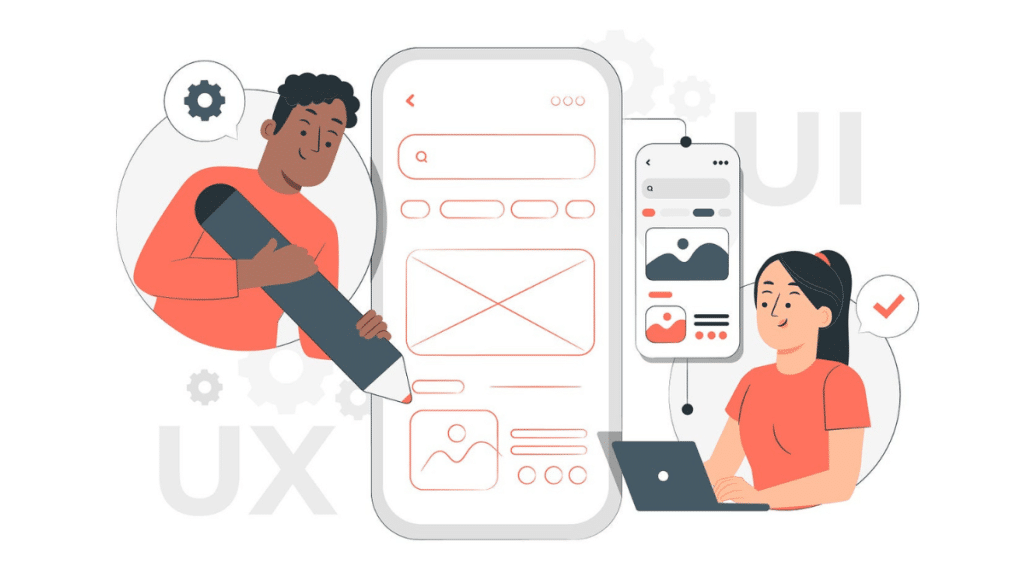In today’s digital world, the way users interact with your website can either make or break your business. User Experience (UX) design is more than just creating beautiful interfaces—it’s about crafting seamless and meaningful experiences for your audience. From navigation and readability to speed and mobile responsiveness, UX design influences every interaction a visitor has with your site.
If your goal is to boost engagement, reduce bounce rates, and convert casual visitors into loyal customers, investing in UX is non-negotiable. Whether you’re running an e-commerce store or using a cleaning business website builder to establish your service, an intuitive and user-friendly design is the foundation of online success.
Why UX Design Is Crucial to Website Performance
1. First Impressions Happen Fast
Users form an opinion about your website in just 0.05 seconds. UX design helps ensure that what they see is organized, attractive, and welcoming. Clean layouts, intuitive navigation, and balanced visuals all play a role in capturing interest instantly.
2. Bounce Rates and Session Duration
A confusing or cluttered layout can send users running, increasing your bounce rate. On the flip side, good UX encourages visitors to explore more pages and spend more time on your site—key signals to search engines that your content is valuable.
UX Design Enhances Usability and Accessibility
3. Clear Navigation Structures
An intuitive menu and logical flow make it easier for users to find what they need. Sticky navigation, breadcrumb trails, and search functions are subtle but powerful tools that increase usability.
4. Mobile-First and Responsive Design
With over 60% of web traffic coming from mobile devices, responsive design isn’t optional—it’s critical. UX design ensures your site looks and functions beautifully across all screen sizes and devices.
Improving Conversions Through UX Optimization
5. Simplified Conversion Paths
Whether it’s signing up for a newsletter or completing a purchase, UX design removes friction. Forms should be short, buttons clearly visible, and messages concise—encouraging action without overwhelming users.
6. Trust Signals and Consistency
Consistent colors, fonts, and design elements build trust. Add to that testimonials, secure payment icons, and transparent policies, and you create a user environment that feels safe and reliable.
UX and SEO: A Powerful Combo
7. Faster Loading Speeds
Page speed is a core UX and SEO factor. A site that loads in under three seconds retains more visitors and ranks better. Compressing images, leveraging caching, and clean coding all contribute.
8. Structured Content and Readability
UX design promotes scannable content—using headings, bullet points, and white space to make reading easier. This benefits both users and search engines by making content digestible and indexable.
User Feedback as a UX Goldmine
9. Analyzing User Behavior
Heatmaps, session recordings, and click-tracking tools reveal what users love—and what they don’t. UX-focused brands like Website Digitals use this data to refine interfaces, test new designs, and optimize experiences based on actual user behavior.
10. A/B Testing and Iterative Design
Split-testing different layouts, colors, CTAs, and features helps determine what works best. UX thrives on iteration, and minor changes can often lead to major improvements in engagement and conversion.
Emotional Engagement and User Satisfaction
11. Microinteractions and Animations
Little things like hover effects, confirmation sounds, or loading animations can make a big difference. These touches enhance user satisfaction and leave lasting impressions.
12. Empathy-Driven Design
Understanding your audience—what they want, need, and feel—lets you design experiences that resonate. Empathy is at the heart of UX, and it leads to interfaces that genuinely serve the user.
User-Centered Design Leads to Long-Term Loyalty
13. Anticipating User Needs
The best UX doesn’t just respond to actions—it predicts them. Features like predictive search, autofill, and personalized recommendations show that you understand your users’ journey.
14. Reducing Cognitive Load
Too many choices or too much information overwhelms users. Good UX design simplifies choices, guides decision-making, and leads to a smoother interaction path.
The Business Value of UX Design
15. Return on Investment (ROI)
Every dollar invested in UX brings a return of up to $100. That’s because well-designed user experiences directly influence customer acquisition, retention, and satisfaction—all key metrics for business growth.
16. Competitive Advantage
In saturated markets, a superior user experience is often the edge you need to stand out. Businesses that prioritize UX are more likely to convert, retain, and delight their audience.
FAQs About User Experience (UX) Design
Q1. What is UX design in simple terms?
UX design is the process of creating websites and apps that are easy, enjoyable, and efficient to use.
Q2. How does UX affect my website’s SEO?
UX affects bounce rates, time on site, and mobile responsiveness—all of which are key SEO factors.
Q3. Can a small business benefit from UX design?
Absolutely. Even simple UX improvements can lead to better customer satisfaction and higher conversions.
Q4. How do I know if my UX design is working?
Use analytics tools to track user behavior, heatmaps, and conversion metrics to evaluate performance.
Q5. What’s the difference between UX and UI?
UX is about the overall experience; UI is about the look and feel. Good UX includes good UI.
Q6. How often should I update my UX design?
Review your UX every 6–12 months, or whenever you launch new features or notice drops in performance.
Conclusion
User Experience (UX) design is not just a trend—it’s a critical element of your website’s success. It shapes how users feel, what actions they take, and whether they come back. From first impressions to ongoing engagement, UX has the power to transform your website from a static presence into a dynamic, customer-converting machine.
Start thinking like your users. Test, optimize, and never settle. Because in the end, better experiences build better businesses.
